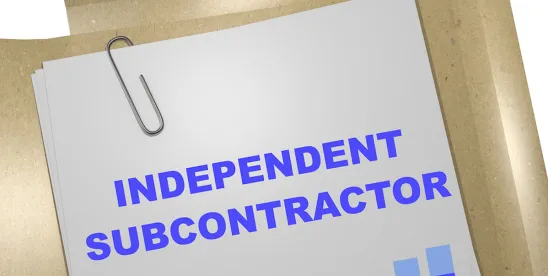We’ve written before about the “tennis match” that describes how, with changes in presidential parties, the Department of Labor (DOL) has proposed different tests to determine whether workers are “employes” covered by the Fair Labor Standards Act (FLSA) or “independent contractors” who are exempt from FLSA coverage. Indeed, with the new administration taking office last month, the DOL looks to be setting up a new volley in this ongoing match.
Current Status: Incoming DOL Leadership Is Reassessing the Agency’s Position
The Trump 2.0-era DOL had been slated to defend the Biden-era DOL Independent Contractor Rule (the “2024 Independent Contractor Rule”) in oral arguments before a federal appeals court in early February 2025. See Frisard’s Transp., LLC v. United States DOL, No. 24-30223.
But the DOL secured a postponement to decide how to proceed and is now due to provide the court a status update by March 25, 2025. (Frisard’s is one of five lawsuits challenging the 2024 Independent Contractor Rule.)
Likely Future Status: Farewell to the Short-Lived 2024 Independent Contractor Rule
We can expect that the DOL will drop its defense of the 2024 Independent Contractor Rule, which had rescinded the Trump 1.0-era test for independent contractor classification under the FLSA (the “2021 Independent Contractor Rule”).
Incoming DOL leadership might restore the 2021 Independent Contractor Rule or might just let courts analyze classification questions without agency guidance.
What Does This All Mean for Employers?
The back-and-forth over different administrations’ DOL rules can leave one’s head spinning. Let’s review what this latest volley will mean for employers.
If the 2021 Independent Contractor Rule is restored, it means a five-factor test to determine worker classification, with two being “core” factors: the nature and degree of the worker’s control over the work, and the worker’s opportunity for profit or loss. (By contrast, the 2024 Independent Contractor Rule being challenged uses a six-factor test, with a “totality of circumstances approach.”) The 2021 Independent Contractor Rule was generally viewed as simpler and more employer friendly, but it was no free pass, either. It made clear that actual practice dictates whether a worker is properly classified, not contractual labels or the parties’ preference.
If the DOL declines to issue guidance, courts will continue to do what they’ve long done anyway — reference their own precedents, which frankly consider the same types of factors identified in the both the 2021 and 2024 Independent Contractor Rules to determine if a worker is an employee or independent contractor. These classification analyses are fact-intensive and case-specific.
Amidst Flip-Flopping, Constant Good Advice: Be Careful When Classifying Workers as Independent Contractors
That fact-intensive judicial analysis is good reason to proceed with caution when classifying workers as independent contractors, even with an anticipated pro-employer bend at the DOL. (Indeed, the game-changing Loper Bright decision last summer means any DOL interpretation of the arguably ambiguous term “employee” in the FLSA is not entitled to judicial deference, anyway.) Therefore, it still behooves employers to ask themselves some key questions when classifying workers as independent contractors:
- What is the nature and degree of control that the worker has over their own work? For example, does the company set the worker’s schedule, supervise their performance, or control pricing for their services?
- What type of opportunity for profit or loss does the worker have? For example, is the worker making entrepreneurial investments in their services?
- Is the relationship with the worker non-exclusive?
- Is the worker providing services on a project-specific or sporadic basis, rather than indefinitely or continuously?
- Are the worker’s services integral to the company’s principal business?
- Do company employees perform the same type of services as the worker?
- Does the worker bring a special or unique skill?
- Where is the worker located? Remember, some states have very stringent so-called ABC-tests that would classify many workers as employees, even if the other factors outlined above are satisfied.
Companies uncertain about their classification decisions should reach out to counsel for advice.




 />i
/>i

